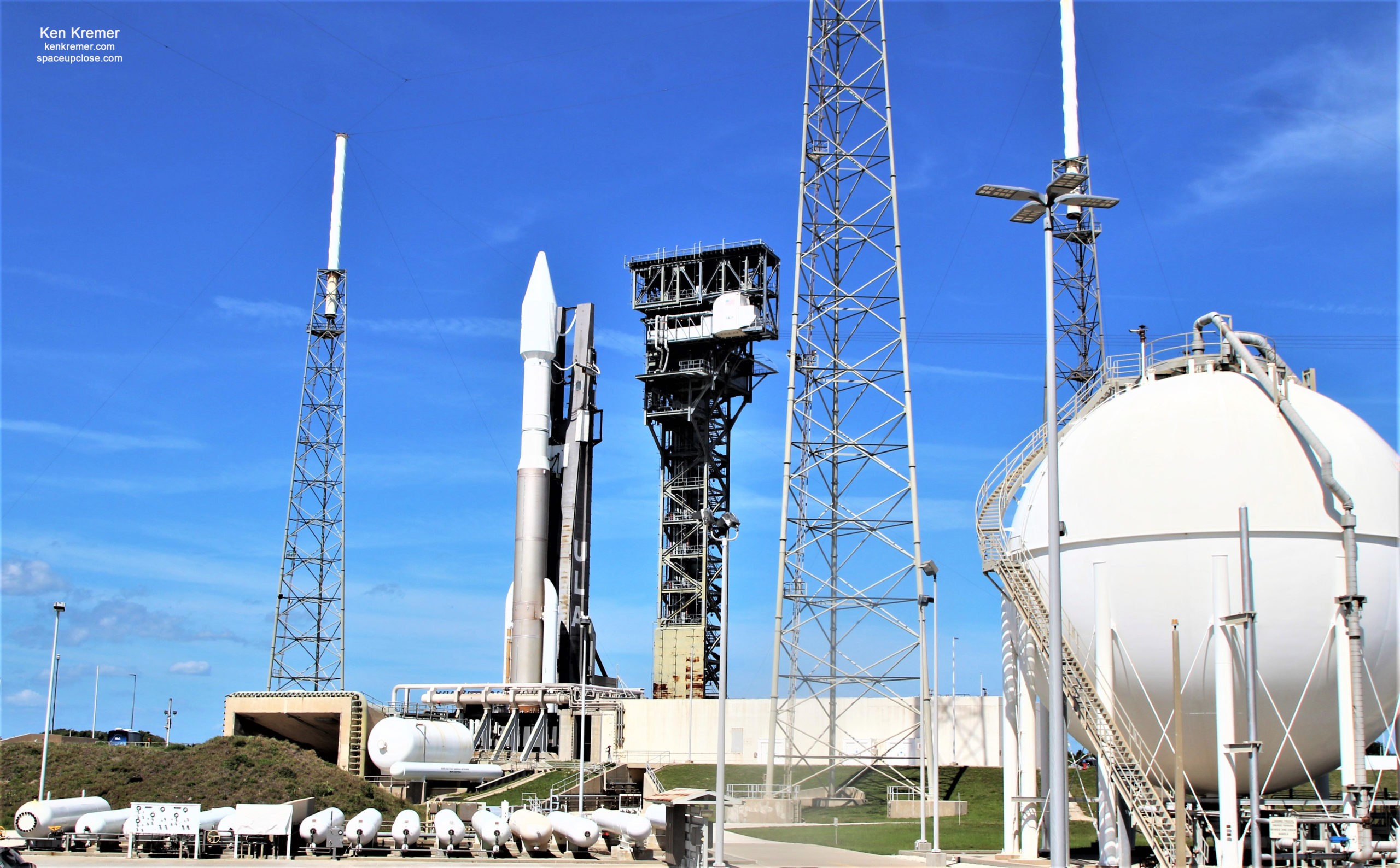
For SpaceUpClose.com & RocketSTEM
CAPE CANAVERAL SPACE FORCE STATION, FL – The billion dollar early missile warning and defense detection SBIRS GEO-5 satellite for the U.S. Space Force is poised for liftoff Monday afternoon, May 17, on a mission critical for U.S. national defense aboard a United Launch Alliance (ULA) Atlas V rocket from Florida’s Spaceport – and the weather looks outstanding.
Liftoff of the SBIRS GEO Flight 5 mission for the U.S. Space Force’s Space and Missile Systems Center is slated for Monday, May 17 at 1:35 p.m. EDT (1735 GMT) from Space Launch Complex-41 at Cape Canaveral Space Force Station (CCSFS) in Florida.
Atlas V will deliver the SBIRS GEO Flight 5 mission to a geosynchronous transfer orbit (GTO).
This will be the first National Security Space launch from CCSFS this year and more will follow.
SBIRS GEO 5 will add to the constellation of the first four satellites 1 to 4 already operating in geosynchronous orbit (GEO).

The SBIRS GEO Flight 5 missile detection satellite for U.S. Space Force is enclosed in the nose cone atop the ULA Atlas V rocket and slated for launch at 1:35 p.m. ET on May 17, 2021 from the Space Launch Complex-41 pad at Cape Canaveral Space Force, Florida. Credit: Ken Kremer/kenkremer.com/SpaceUpClose.com
The upgraded SBIRS GEO-5 satellite was manufactured by prime contractor Lockheed Martin and is the most advanced early missile warning and missile detection satellite ever built and deployed – at a cost of approximately $1 Billion.
Lockheed Martin reports that the satellite “was built in a record time and at no additional cost to the government for the upgrade.”
“SBIRS’ role as an ever-present, on-orbit guardian against global ballistic missile threats has never been more critical,” said Tom McCormick, Lockheed Martin’s vice president for Overhead Persistent Infrared (OPIR) Systems. “In 2019 alone, SBIRS detected nearly one thousand missile launches, which is about a two-fold increase in two years.”
SBIRS GEO-5 is the first military space satellite built on the company’s modernized, modular LM 2100™ combat bus. SBIRS GEO-6, launching in 2022, is also being built on the new bus designed for speed and resilience.
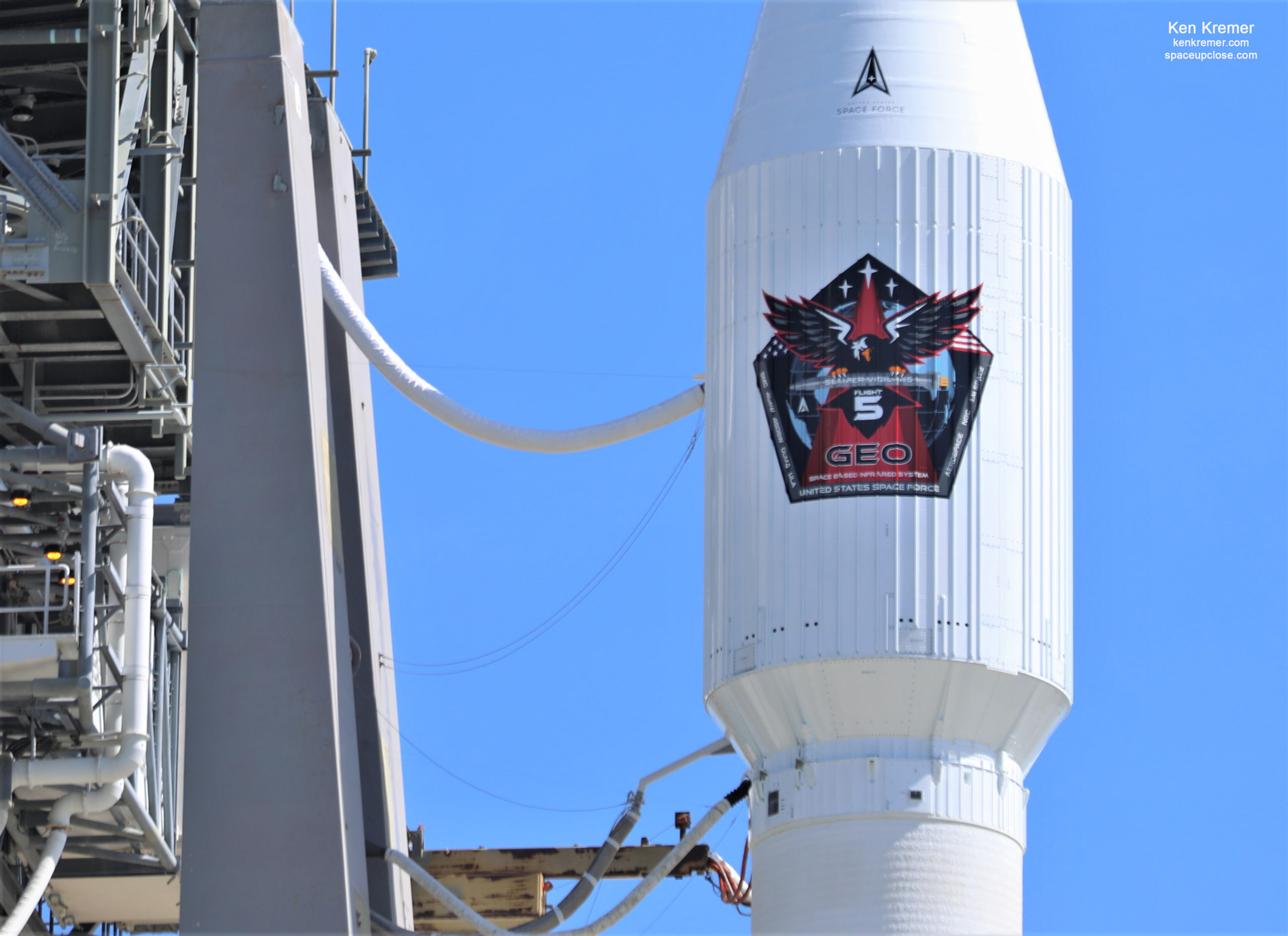
The combined Atlas V rocket and national security payload stand 194 feet (59 meters) tall.
The rocket and payload were rolled out Saturday morning vertically on the mobile launcher from the Vertical Integration Facility (VIF) some 1800 feet to pad 41.
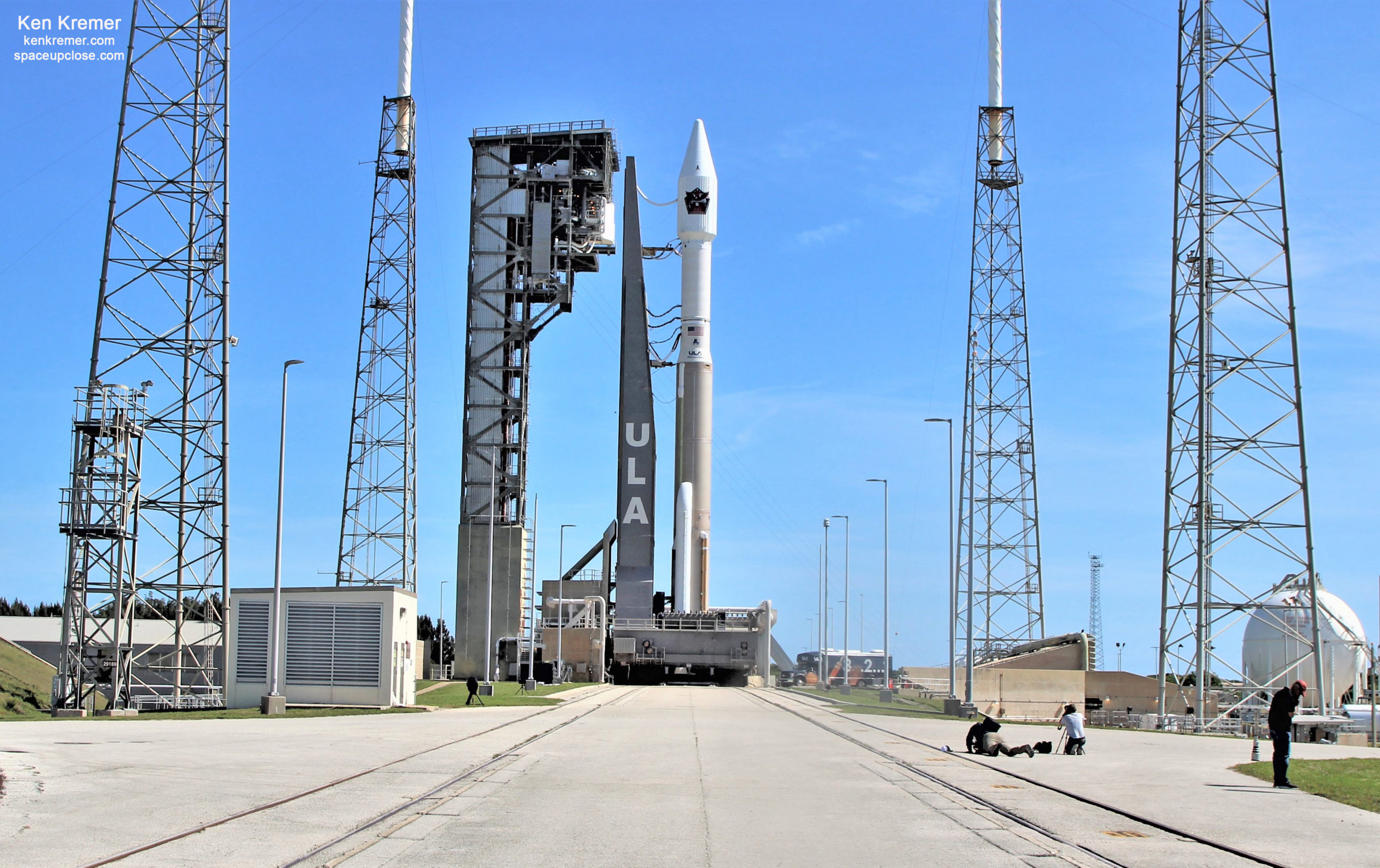
A pair of 12 unit cubesats or Multimission satellite vehicles are also aboard as payloads and will be deployed before the primary SBIRS payload
Check out my photos of the Atlas V rocket vertical taken at pad 41 for Space UpClose
It was truly a treasure to see our nations mightiest defense missile warning satellite enclosed in the nose cone perched atop a ULA Atlas V during our media remote camera setup Sunday afternoon.
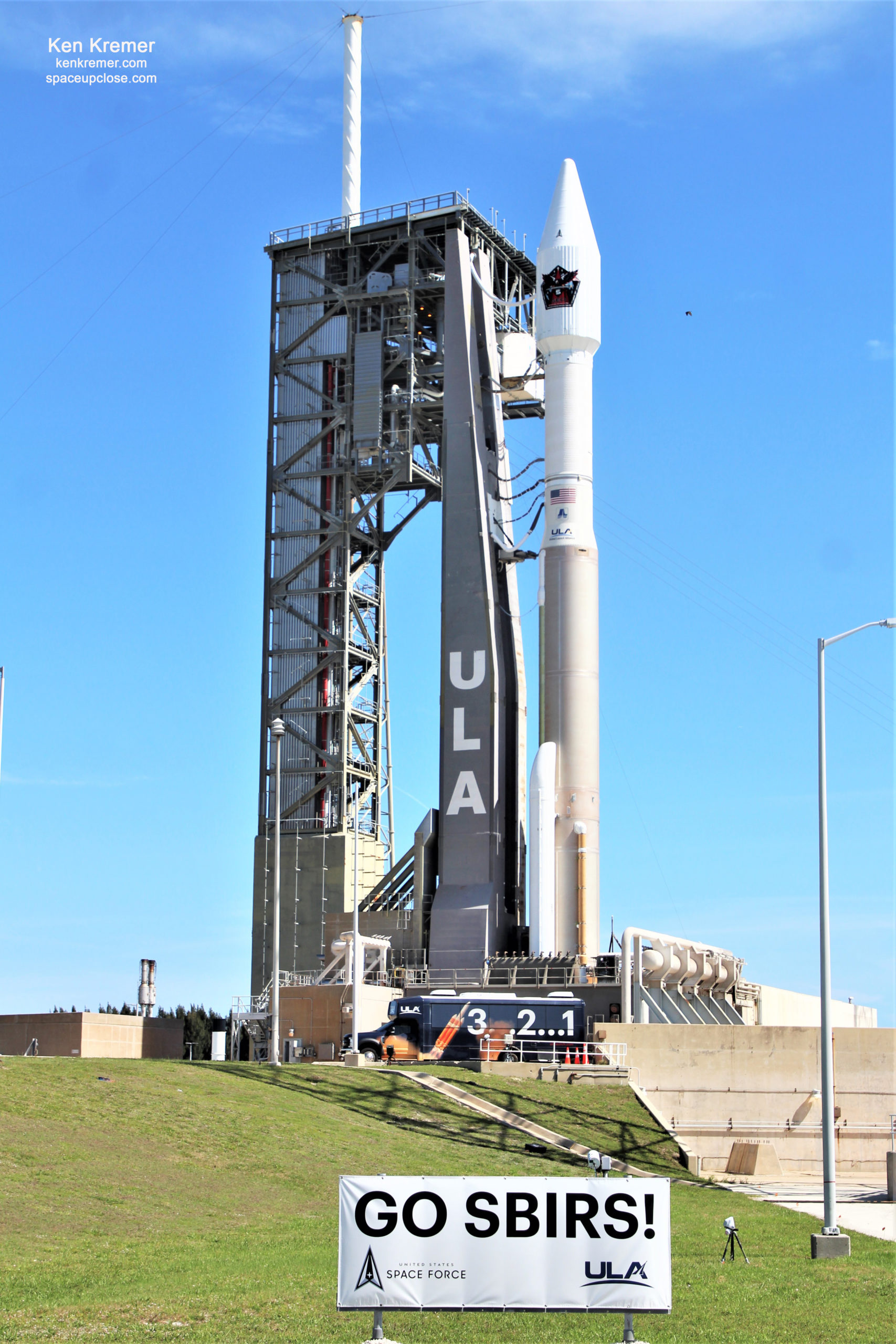
You can watch the launch live via a ULA webcast starting about 20 minutes before liftoff
ULA live broadcast coverage of launch will begin at 1:15 p.m. EDT on May 17.
ULA Live launch updates and webcast available at: www.ulalaunch.com
Updates also available at: www.facebook.com/ulalaunch, twitter.com/ulalaunch and instagram.com/ulalaunch
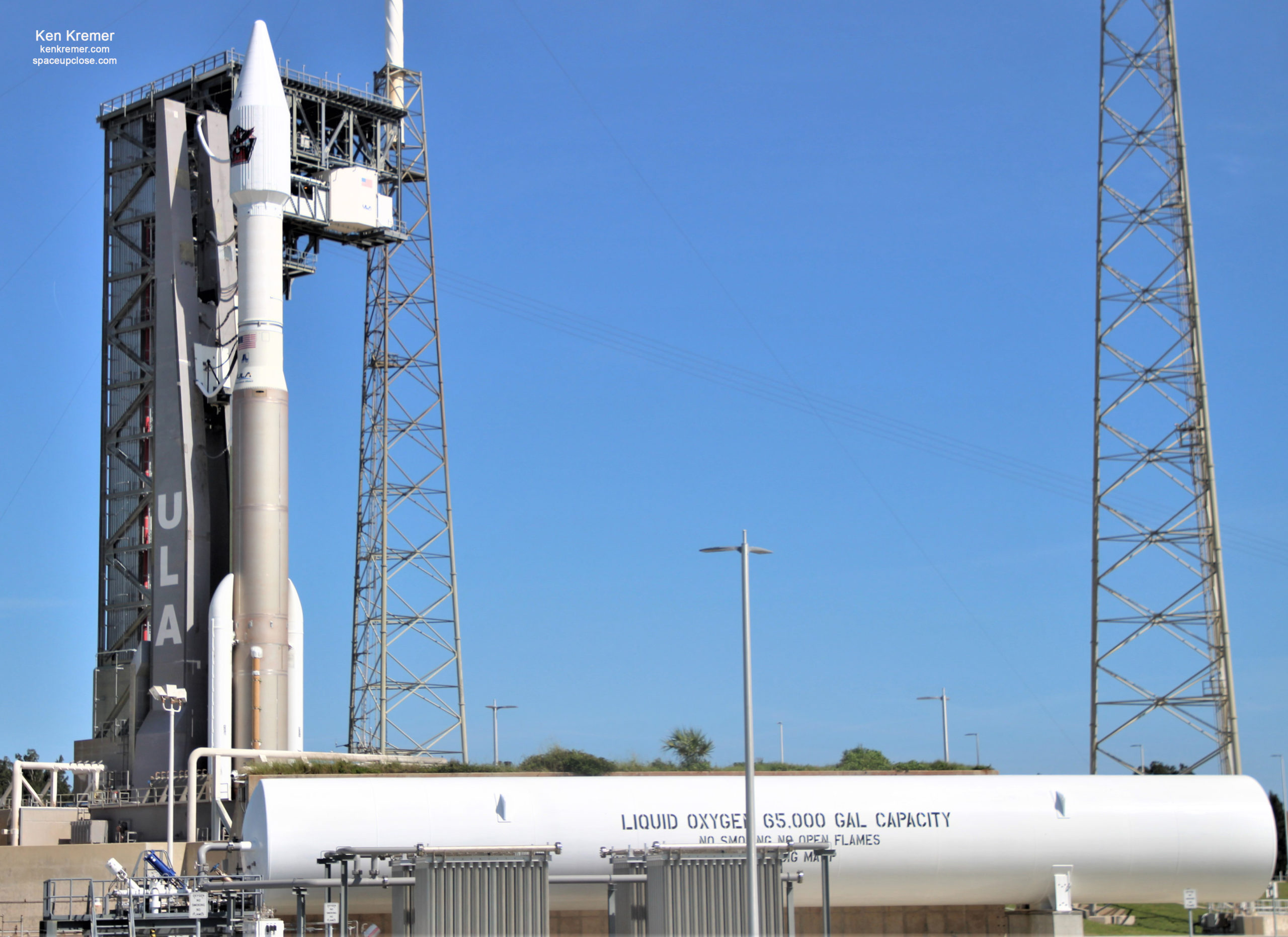
The forecast from meteorologists with newly renamed Space Launch Delta 45 shows a 90 percent chance of favorable weather conditions for launch.
The Primary Concern is the Cumulous Cloud Rule
In case of a delay the back up 24 hour delay is on Tuesday, May 18 and the forecast drop slightly to 80 percent chance of favorable weather conditions for launch
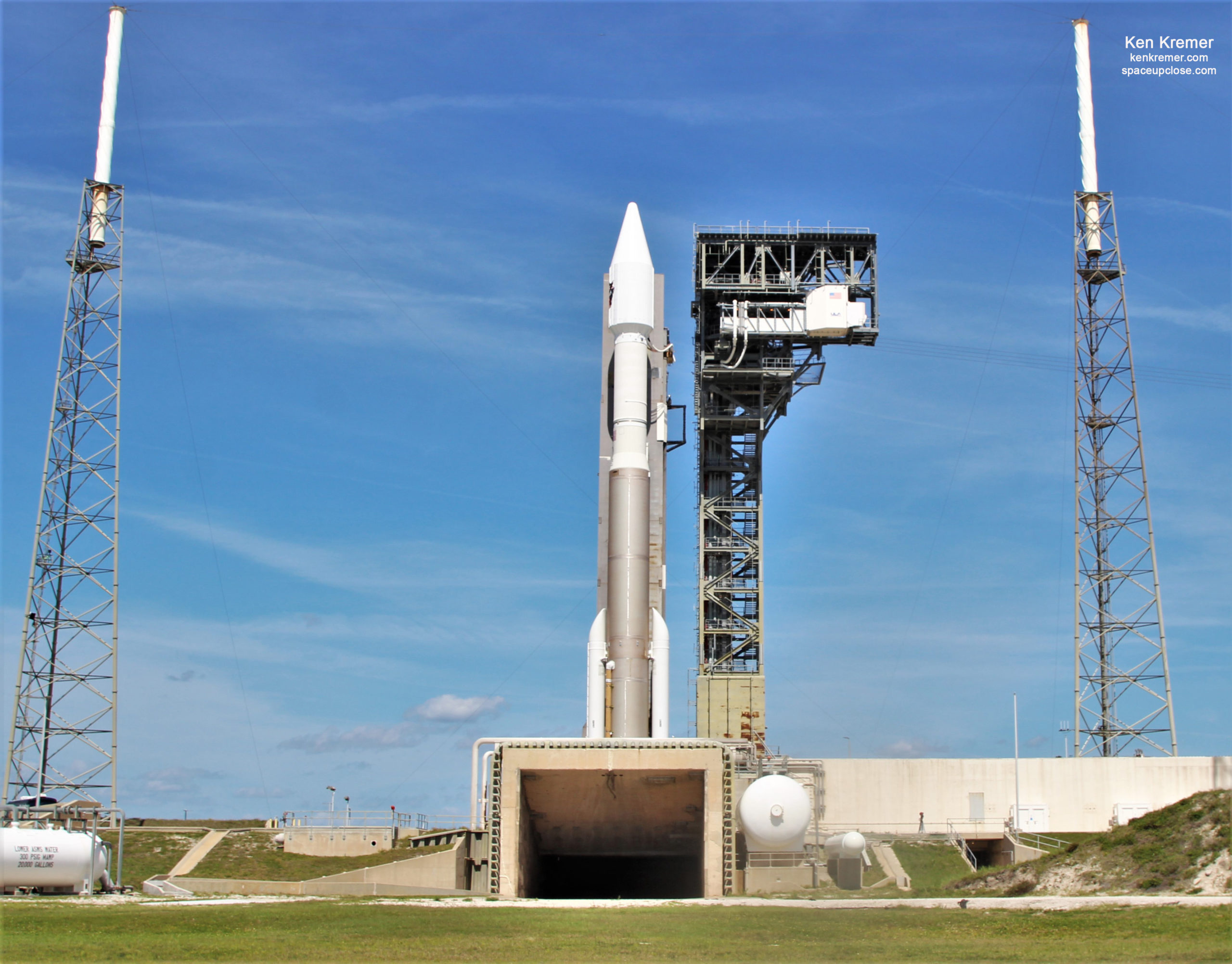
Over all this will be the 1st NSSL launch from the Cape but the second of six this year.
The modernized LM 2100 Combat Bus is an enhanced space vehicle that provides even greater resiliency and cyber-hardening against growing threats, as well as improved spacecraft power, propulsion and electronics, says Lockheed Martin.
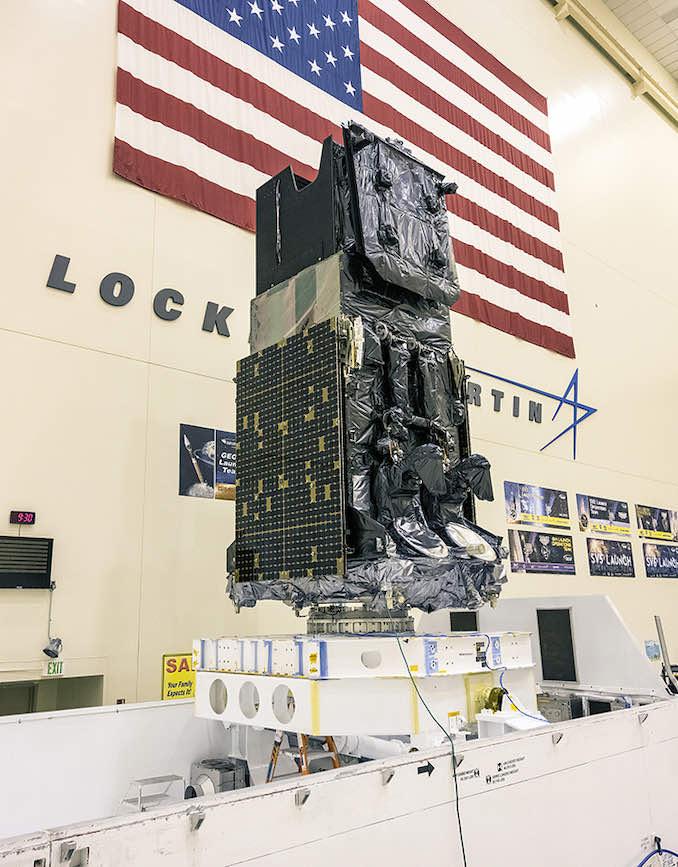
The fifth Space Based Infrared System Geosynchronous Earth Orbit SBIRS GEO-5 missile detection and early warning satellite will launch on a ULA Atlas V 421 rocket.
The upgraded SBIRS GEO-5 satellite has a mass of about 10,700 kg and is the same size as satellites 1 to 4 in the constellation
For Lockheed Martin, this is the first launch of a military satellite built on our modernized LM 2100 Combat Bus – an enhanced space vehicle that provides even greater resiliency and cyber-hardening against growing threats, as well as improved spacecraft power, propulsion and electronics.
The Atlas V 421 configuration: The first stage is augmented with two solid rocket motors and powered by the singe engine dual nozzle RD-180 engine system fueled by RP-1 and LOX propellants.
The second stage is powered by a Centaur with a single engine RL-10C-1-1
The payload fairing is extra extended 4 meter diameter
Overall this launch will be 144th mission for United Launch Alliance.
Furthermore it is the 87th Atlas V launch and the 8th in the 421 configuration.
Thus far the ULA Atlas V rocket successfully launched the first four SBIRS GEO satellites between 2011 and 2018.
The last in the series is being manufactured by Lockheed Martin and will launch next year.
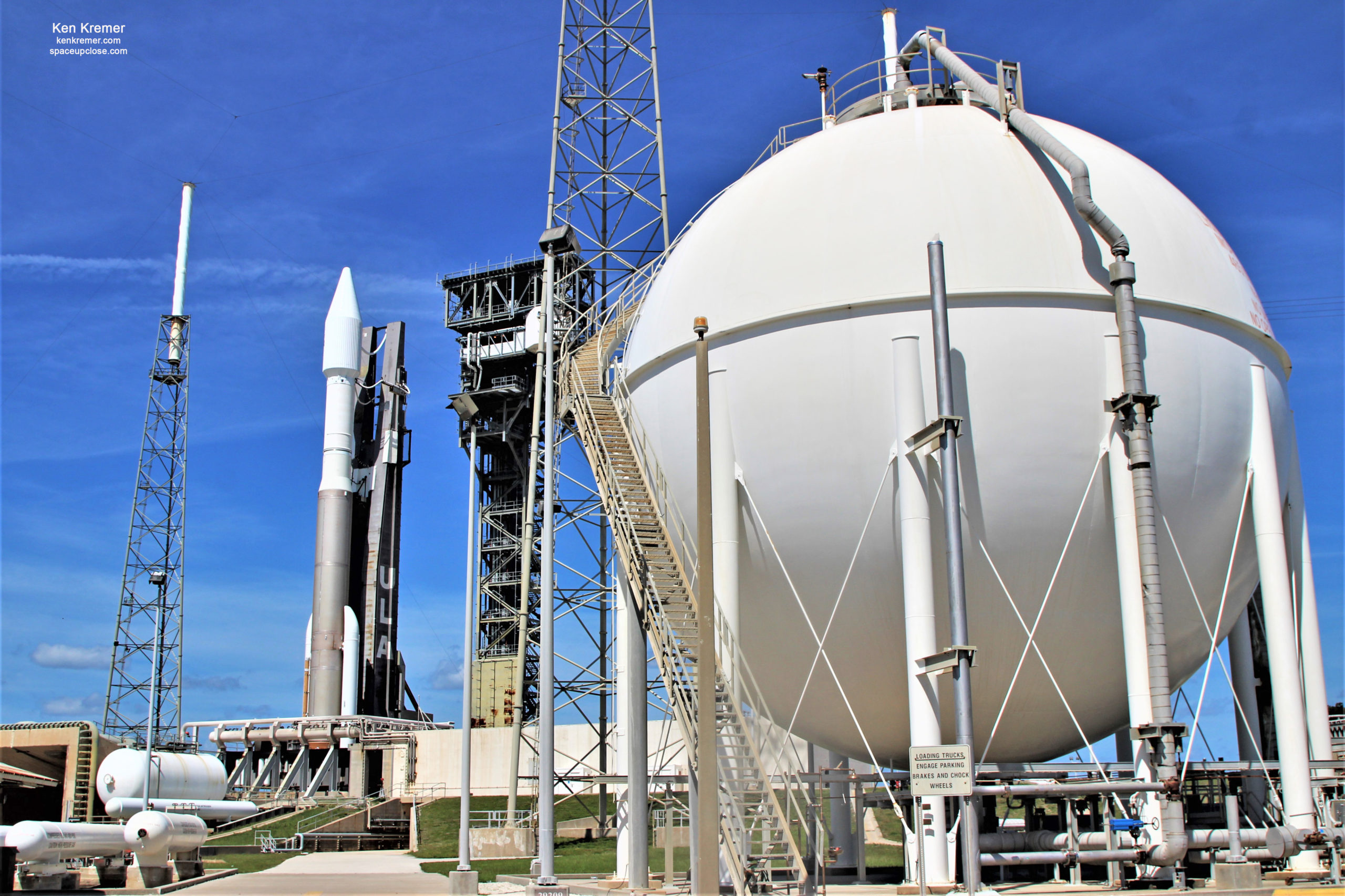
My prelaunch photos from pad 41 were featured on WKMG CBS 6 TV News Orlando:

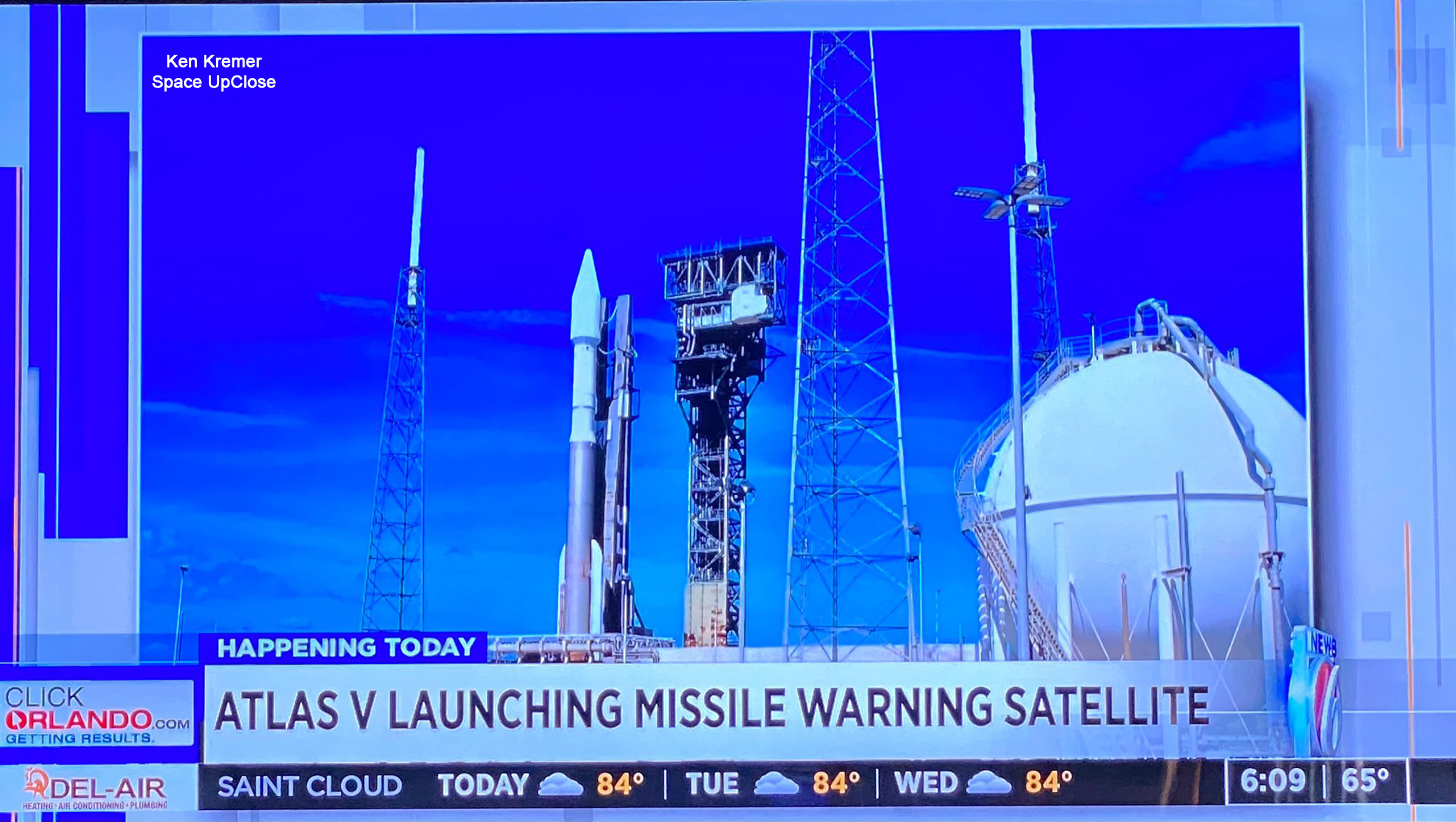
Watch Ken’s continuing reports about ULA missions, Starlink, Mars 2020 Perseverance and Curiosity rovers, Artemis and NASA missions, SpaceX, Commercial Crew Starliner and Crew Dragon and onsite for live reporting of upcoming and recent SpaceX and ULA launches including Crew 1 & 2, Demo-2, ISS, X-37B, Solar Orbiter, NRO spysats and national security missions and more at the Kennedy Space Center and Cape Canaveral Space Force Station.
Stay tuned here for Ken’s continuing Earth and Planetary science and human spaceflight news: www.kenkremer.com –www.spaceupclose.com – twitter @ken_kremer – email: ken at kenkremer.com
Dr. Kremer is a research scientist and journalist based in the KSC area, active in outreach and interviewed regularly on TV and radio about space topics.
………….
Ken’s photos are for sale and he is available for lectures and outreach events
Please consider supporting Ken’s work by purchasing his photos and/or donating at Patreon:
https://www.patreon.com/kenkremer
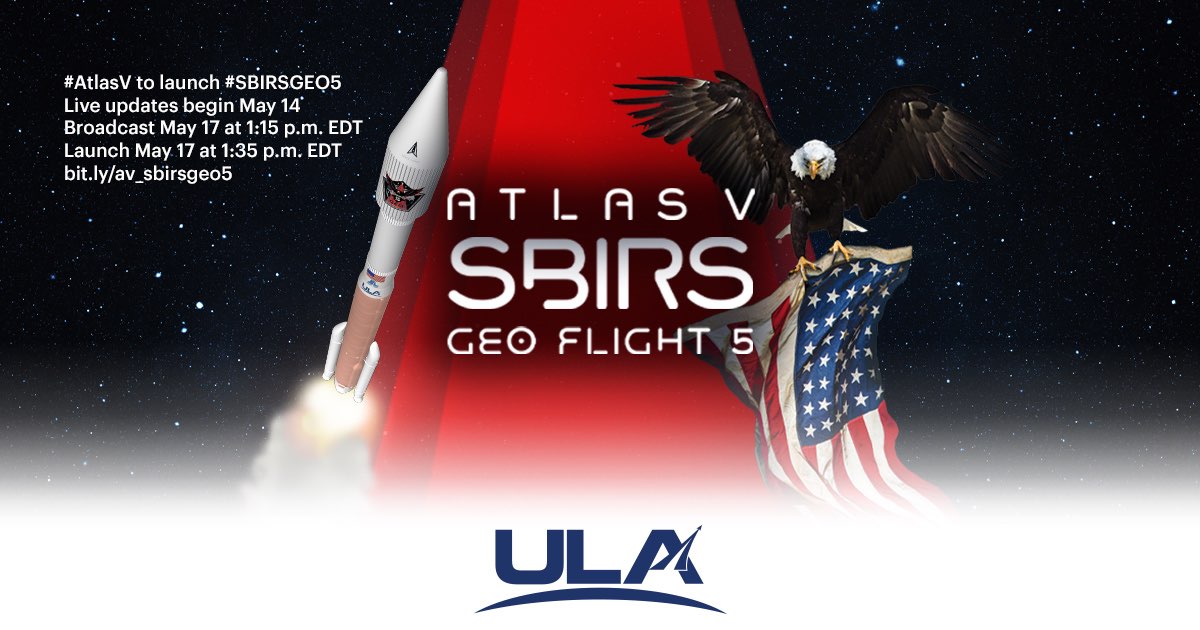
x



